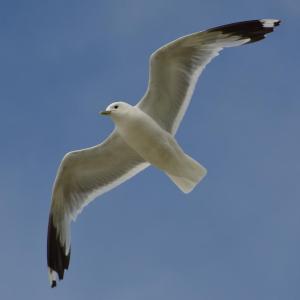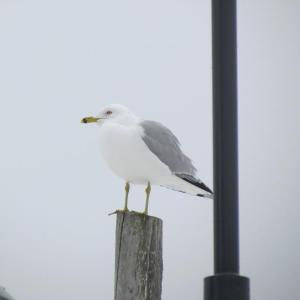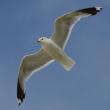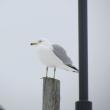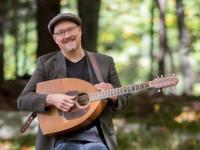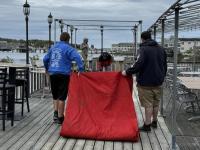A Gull By Any Name
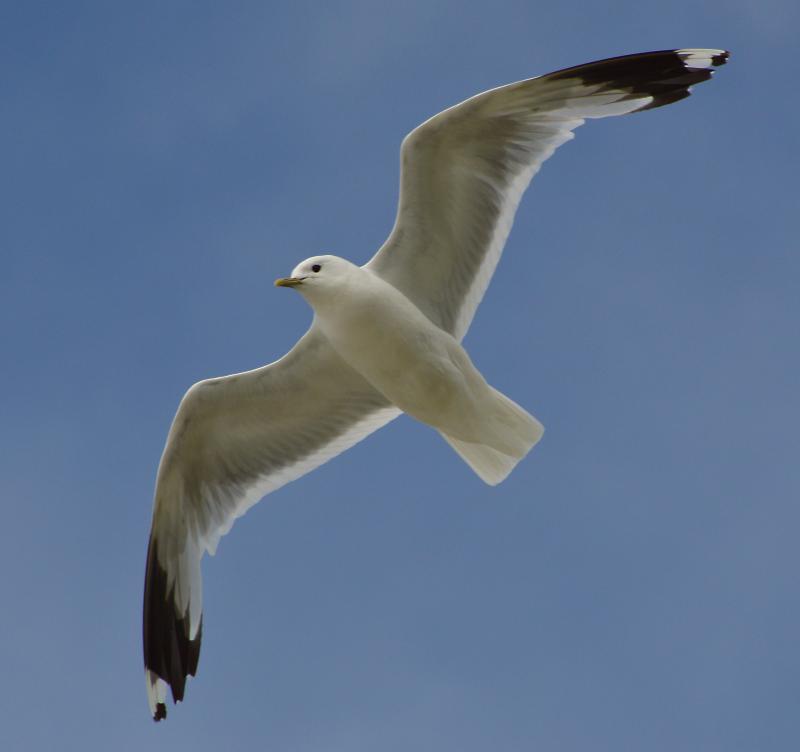 The bird known as a common gull is indeed common where this one was photographed in England, but it is an extreme rarity here in Maine. One was found in Eastport last week. Photo by Jacob Spinks, courtesy of Wikimedia Commons.
The bird known as a common gull is indeed common where this one was photographed in England, but it is an extreme rarity here in Maine. One was found in Eastport last week. Photo by Jacob Spinks, courtesy of Wikimedia Commons.
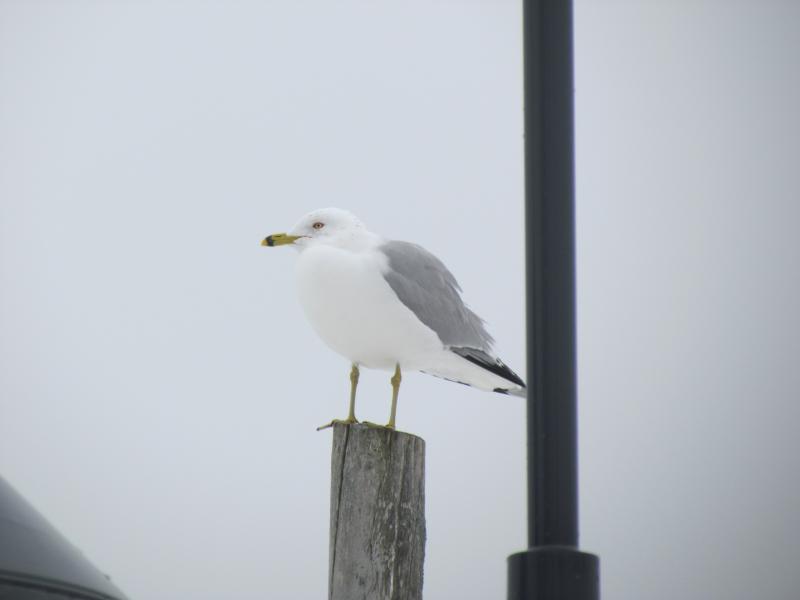 The ring-billed gull is common here in Maine, unlike the common gull which looks quite similar. Ring-billed gulls are often found inland, far from the sea. Courtesy of Jeff Wells.
The ring-billed gull is common here in Maine, unlike the common gull which looks quite similar. Ring-billed gulls are often found inland, far from the sea. Courtesy of Jeff Wells.
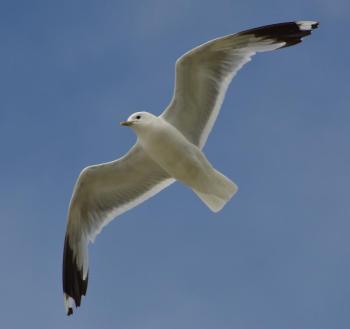 The bird known as a common gull is indeed common where this one was photographed in England, but it is an extreme rarity here in Maine. One was found in Eastport last week. Photo by Jacob Spinks, courtesy of Wikimedia Commons.
The bird known as a common gull is indeed common where this one was photographed in England, but it is an extreme rarity here in Maine. One was found in Eastport last week. Photo by Jacob Spinks, courtesy of Wikimedia Commons.
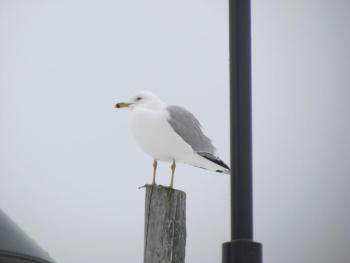 The ring-billed gull is common here in Maine, unlike the common gull which looks quite similar. Ring-billed gulls are often found inland, far from the sea. Courtesy of Jeff Wells.
The ring-billed gull is common here in Maine, unlike the common gull which looks quite similar. Ring-billed gulls are often found inland, far from the sea. Courtesy of Jeff Wells.
Seagull. It’s a term that we probably all grew up hearing and using. Most people still do.
Birders, on the other hand, never say “seagull.” In fact, when many birders hear the term “seagull” are prone to utter the infamous pronouncement, “There is no such thing as a seagull.”
The non-birder, hearing this, has two reactions. The first is invariably to think that the person uttering those words is, at worst, irritating, and at best, eccentric. The second is to think that the person obviously has no idea what they are talking about since “seagulls” are real animals that they have seen with their own eyes.
What birders mean is that among all the officially sanctioned names for the 51 or so species of gull found across the world, the name “seagull” is not to be found. The word “gull” itself has historically been applied to a group of bird species, the majority of whom have associations with marine environments in some part of their lifecycle and have a rather strong, slightly hooked beak, webbed feet, and long, thin wings that make them great flyers. Gulls are closely related to terns, which tend to be smaller, have beaks that are not even slightly hooked and, unlike gulls, which will eat anything, take live fish for prey.
There are some exceptions to some of these generalizations. For example, Caspian terns are large by way of terns, about the size of a medium-sized gull and much larger than the smallest gulls such as the Bonaparte’s gull or the aptly named little gull.
The exact number of gull species is hard to pin down as the relationships among and within some forms continues to be clarified (and sometimes muddied) by the latest research. There are multiple forms of the bird that is most often called a seagull here in Maine, the herring gull. The adults, with their gray upperwings, black wing tips, and yellow bills, can be found across the U.S., Europe, and Asia. But populations in each area have subtle distinctions from those in other geographies. Some authors consider the herring gulls breeding in North America to be a distinct species from those breeding in Europe, and both to be different from forms breeding in Asia.
Another similar situation is found in the gulls that have been sometimes collectively considered a single species called “mew gull.” One form of this close look-alike to our familiar ring-billed gull breeds in Alaska and northwestern Canada and winters along the Pacific Coast south to Baja Mexico. This is now known as the short-billed gull. Another form—known as the common gull—breeds across Europe and Asia. A form in Siberia has been suggested to be considered a third species. That form would be known by the name Kamchatka gull, if it were officially recognized.
Here in Maine, any form of the “mew gull” is a rarity, although not on the level of our famous sea-eagle. Last week one of the European forms, the common gull, was discovered and photographed in Eastport. It was not a “seagull,” though it was near the sea, nor was it “common” (at least here in Maine), despite its name. The one thing that you can be certain of was that it was indeed a “gull,” and many birders made the long drive to Eastport to see it.
Jeffrey V. Wells, Ph.D., is a Fellow of the Cornell Lab of Ornithology and Vice President of Boreal Conservation for National Audubon. Dr. Wells is one of the nation's leading bird experts and conservation biologists and author of the “Birder’s Conservation Handbook.” His grandfather, the late John Chase, was a columnist for the Boothbay Register for many years. Allison Childs Wells, formerly of the Cornell Lab of Ornithology, is a senior director at the Natural Resources Council of Maine, a nonprofit membership organization working statewide to protect the nature of Maine. Both are widely published natural history writers and are the authors of the popular books, “Maine’s Favorite Birds” (Tilbury House) and “Birds of Aruba, Bonaire, and Curaçao: A Site and Field Guide,” (Cornell University Press).

